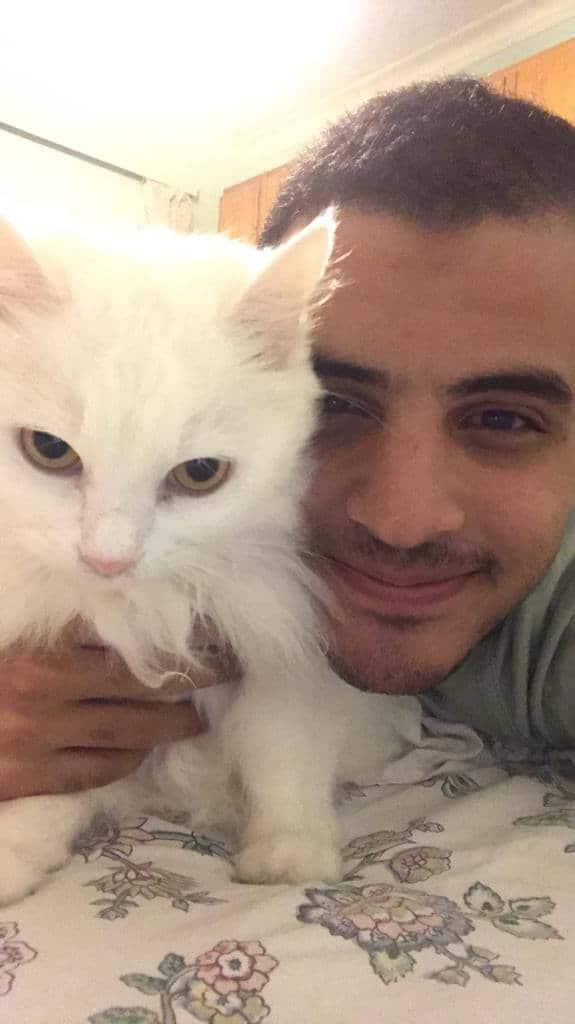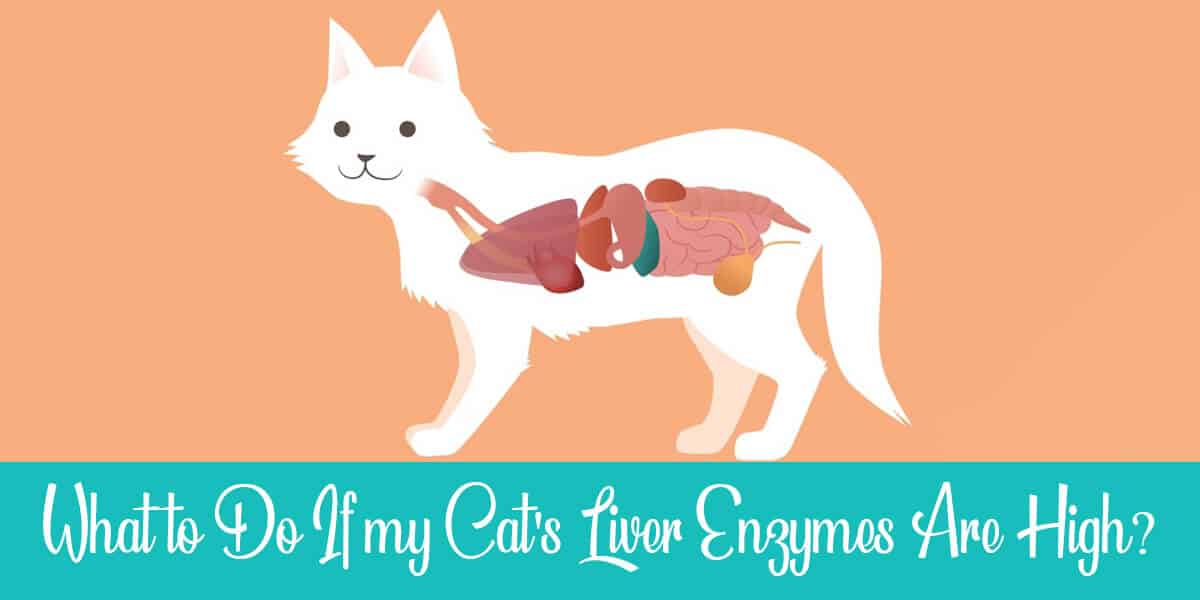Have you received your cat’s blood test results and found that its liver enzymes are over 500? Don’t panic!
We’ll walk you through liver diseases in cats, reasons, and causes for elevated levels of enzymes. We’ll come to know when to worry about our furbabies, symptoms and telltale signs of elevated liver enzymes, and treatment options.
Table of Contents
Cat Liver Enzymes Over 500: First Steps
We can confirm cat liver enzymes over 500 can come through a biochemical profile. The elevation doesn’t always imply liver disease. Since it can denote an underlying condition for other organs, not necessarily connected to the liver. So, monitoring your pet and being aware of any behavioral and bodily changes, is the key to early discovery and successful treatment.
What Causes Elevated Levels of Liver Enzymes in Cats?
Elevated liver enzymes in cats could suggest various conditions and illnesses. The liver might not always be the source behind the high count of enzymes, as other organs might be producing the same enzyme.
To reach an indicative diagnosis, a biochemical profile is required. Occasionally, you might need more tests to reach an accurate diagnosis, such as liver function testing.
A blood test sample reports the levels of liver enzymes as mentioned earlier. The concentration of the liver enzymes might indicate damage in the liver or another organ that might be producing the same enzyme. Some of these enzymes are:
- AST (aspartate aminotransferase)
- GGT (gamma-glutamyl transpeptidase)
- ALP (alkaline phosphatase)
- ALT (alanine aminotransferase).
Also Read: Why is My Cat Pawing at Its Mouth After a Dental Surgery?
What Do Liver Enzymes Do?
Enzymes are catalysts that boost the rate of chemical reactions within the cells. Liver diseases, and elevated counts of liver enzymes, happen for various reasons. They occur due to damage in the liver cells.
Any sort of imbalance or abnormal counts of liver enzymes ultimately affects the functions of the liver. Some of these functions are:
- Detoxifying waste and toxins (whether it’s consumed by the pet, or produced in the body).
- Metabolizing carbohydrates, proteins, and fats.
- Storing nutrients, vitamins, and minerals.
- Manufacturing protein needed for bodily functions.
- Producing bile that is needed for the digestion of fats.
- Regulating and producing immunity factors and hormones.
Can Cats Get Liver Diseases?
Liver diseases in cats are extremely common. They can affect cats regardless of their age and breed. So, kittens and older cats are both prone to liver diseases. The healthiness of the liver plays a vital role in the overall healthiness of the cat.
Most Common Liver Diseases in Cats:
There are various diseases that can affect the cat’s liver and each disease has its causes. Some of the common liver diseases that affect cats: inflammatory diseases such as cholangiohepatitis and lymphocytic cholangitis.
A viral or bacterial infection can also cause liver disease. Another liver disease is hepatic Lipidosis also known as Fatty liver syndrome can also affect the cat’s liver.
Some other common diseases in the body that can affect the liver are: cancer such as Lymphoma and adenocarcinoma. Feline Infectious Peritonitis (FIP), Diabetes Mellitus, Portosystemic shunts, and hyperthyroidism.
Fortunately, the liver’s function and ability to regenerate increase its probability of being able to recover. So, liver failure is a rare occurrence as it occurs when 70% of the liver’s function is lost.
My Cat’s Liver Enzymes are Over 500, Should I be Worried?
According to a paper published in the Journal of Veterinary Internal Medicine, the normal range for the AST is 0-40 U/l, ALT 12-130 U/l, ALP 14-111 U/l, and for GGT it’s 0-2 U/l.
So 500 is a high count for a cat’s liver enzymes. These results indicate that there’s a problem with the cat’s health that requires medical attention and treatment. It definitely doesn’t entail the looming demise of your dear pet, nor is it the end of the world.
Getting an accurate diagnosis from your vet, and starting on a correct treatment is the first step towards better and improved health for your kitty.
Users Also Read: Cat Catheter Removal Questions
Symptoms of High Liver Enzymes in Cats
Cats with liver disease showcase a variety of symptoms. If you notice some of these symptoms on your furbaby, book an appointment with a vet immediately. Liver disease can be life-threatening. So early diagnosis and treatment are crucial for an increased probability of recovery.
Some of these symptoms are:
- Loss of appetite
- Weight loss
- Behavioral changes (aimless wandering and disorientation, lack of energy, depression)
- Vomiting
- Fever
- Yellowing of the whites of the eyes, skin, and gums
- Excessive salivation and thirst
- Diarrhea
- Excessive, and frequent urination (might be bloody)
- Dark urine
- Distention of abdomen and enlargement of the liver
- Seizures
Is There a Treatment for Elevated Levels of Liver Enzymes?
High levels of liver enzymes are luckily treatable. The liver’s regenerative nature increases the chances of recovery, which is why liver failure is uncommon.
Here are a few means of treatment for your dear cat:
1. Discovery and Diagnosis
It is the first and most essential step in the journey of treatment and recovery. As it sheds light on the causes of the elevation and sickness, depending on the symptoms.
Early discovery of the disease and an accurate diagnosis from the vet, is the first step towards a successful recovery. So, keep your eyes wide open and track any changes that your pet undergoes. Go, pet parent!
2. Meow-trition and Diet
Once your cat’s correctly diagnosed, healthy and proper nutrition becomes crucial for managing and treating your pet’s condition. You can decrease the stress on the liver by reducing fats, carbohydrates, proteins, and medicine that requires processing.
So, small meals, with a high-calorie intake, high protein, and low sodium that can be digested easily are ideal.
Your vet might also prescribe supplements for your cat to cover the needed nutrients. They might also prescribe medication to stimulate your pet’s appetite. Be patient, there’s light at the end of the tunnel.
3. Hospitalization and Medication
Depending on the intensity of the symptoms, your cat might need intensive care and hospitalization, in order to stabilize its condition and work on a treatment plan.
The vet might resort to prescribing medications depending on the condition and underlying causes. There’s no need to worry, trust your vet, and trust the process.
To Sum Up
Cat liver enzymes over 500 could indicate the presence of liver disease or other underlying issues that can cause that elevation. Early discovery and accurate diagnosis are crucial for a healthy and successful recovery. If you happen to notice any changes with your pet, head to a vet for an accurate diagnosis.
Seeking support from fellow pet parents with a similar experience on online forums and blogs could ease this stressful time. Best wishes to you and your cat!

I’ve been living with cats since 2008 and I can confidently say I have more feline friends than humans lol. I currently live with 5 cats in different life stages; two of them are less than one year old, one is 2-ish years old and the oldest two are 9-ish years old. I’ve developed a strong bond with cats over the years and I’m eager to share my experience through this blog. You can learn more about my cats here.



